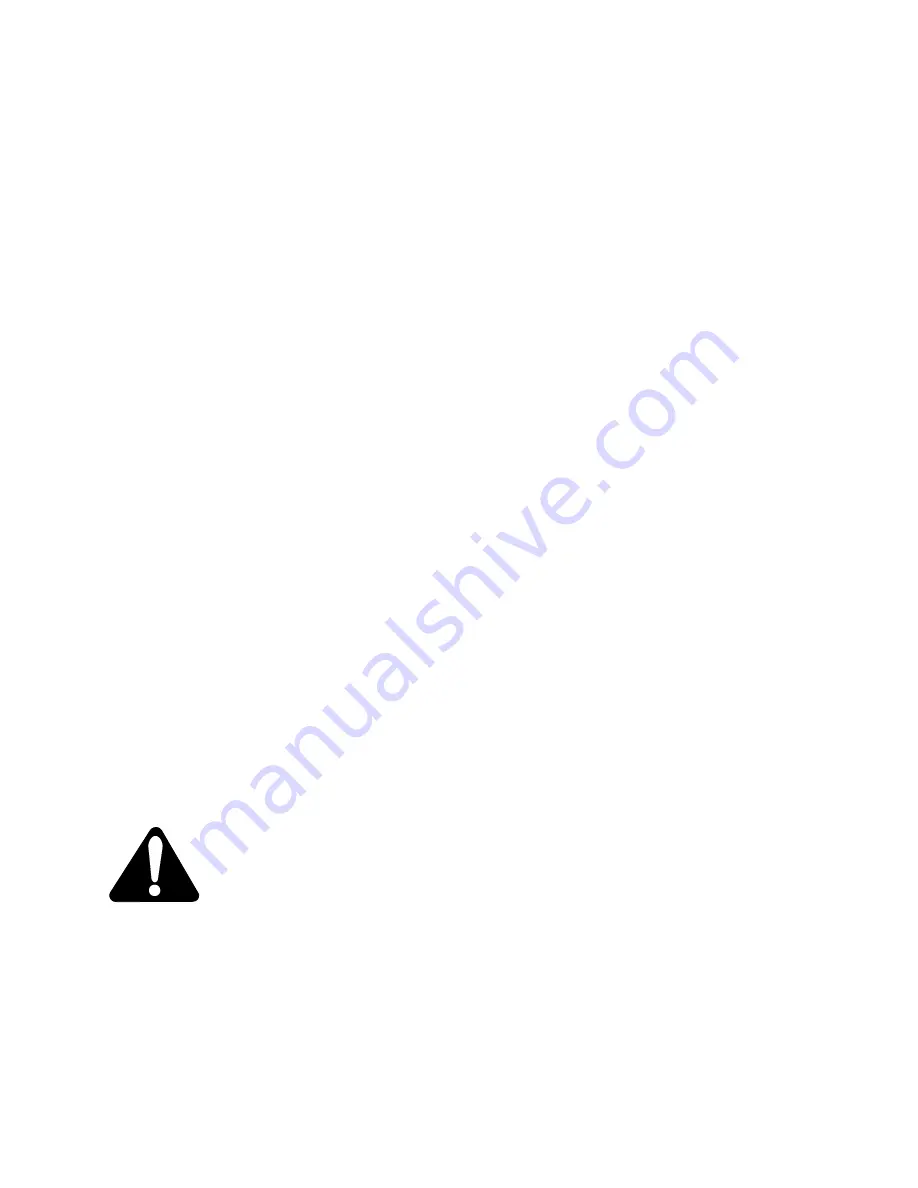
D. Engage the clutch by applying pressure on top of release sleeve and collar assembly (20) and
lock clutch facings between the pressure plate and clutch body. If clutch facings are still free
to move, disengage the clutch and turn adjusting ring COUNTER-CLOCKWISE just enough to
lock the clutch facings in place when clutch is engaged.
NOTE:
The clutch must now be engaged until the clutch assembly is attached to
the engine.
4. Remove clutch driving ring (31) from the clutch facings and attach it to the flywheel with the
specified bolts and lock washers.
5. Before re-installing clutch onto engine lubricate the release sleeve (21) through the grease fitting
mounted on its side.
6. To re-install the clutch/pump assembly onto the engine, reverse the procedure outline under C.
Removal of Clutch/Pump from engine on page 28.
7. When clutch/pump are re-installed check handle engage pressure and adjust if necessary.
TROUBLE SHOOTING YOUR HydroSeeder
®
:
Because of the tremendous work load usually placed upon the HydroSeeder
®
, minor malfunctions will
occur from time to time. If these are not remedied immediately, they could lead to poor performance and
damage to the equipment. This section describes possible problems and the action to correct them.
1. Foam in the tank and air entrainment.
The mixture of dry materials with water will sometimes cause excessive foaming while others will
cause air entrainment. This is noticed primarily in the erratic discharge and a drop in pressure and
distance.
Some solutions are:
A. As the slurry level drops in the tank, slow the agitator.
B. Add 2 or 3 ounces (4 to 6 cl) of an antifoaming agent to the tank.
C. If you can determine which additive is causing the air problem, either add it last or not at all -
unless it’s the water.
D. Limit recirculation time as much as possible.
2. Plugging or clogging:
DANGER:
Turn off engine and disconnect battery cables before working
on equipment. Serious injury or death can result from moving
parts or high pressure spray.
Sometimes when a stoppage occurs, you will not be able to find anything in the line. When this
happens, it means that the system became airbound instead of plugged. To remedy this, see
“Foaming”. Plugging can occur in any one of four places; the valve and recirculation nozzle, the
discharge nozzle, the pump area and the sump area. The plugging is caused by either foreign objects
or dewatered fiber.
29
Summary of Contents for HydroSeeder T120
Page 2: ...BLANK...
Page 26: ...Figure 4 22...
Page 38: ...NOTES 34...
Page 39: ...NOTES 35...
Page 40: ...NOTES 36...
Page 41: ...NOTES 37...
Page 42: ...NOTES 38...
Page 43: ...NOTES 39...
Page 44: ...NOTES 40...
Page 45: ...41 T90 120 II HydroSeeder Parts Manual Model SS LBT90 SS...
Page 79: ...75...






























